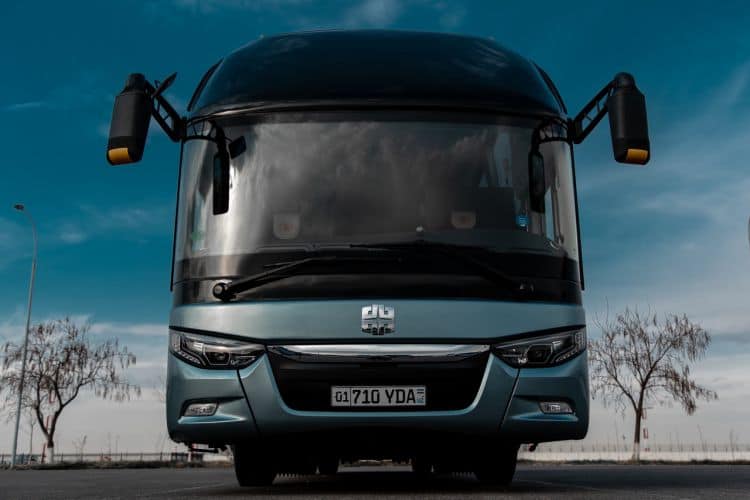 Online content marketing is the bread and butter of today’s budding industries. With digital platforms regarded as a key advertising technique, it’s no wonder that bus rental companies have moved into the website arena too. What makes bus rental companies unique are their close ties with travel blogs and tour bookings.
Online content marketing is the bread and butter of today’s budding industries. With digital platforms regarded as a key advertising technique, it’s no wonder that bus rental companies have moved into the website arena too. What makes bus rental companies unique are their close ties with travel blogs and tour bookings.
That special feature alone opens your bus rental companies to endless possibilities when it comes to online marketing. As a beginner looking to increase your organic traffic, how do you use these strategies to your advantage? Learn some SEO techniques to increase your website traffic.
 The 8 SEO Techniques
The 8 SEO Techniques
Effective and well-managed SEO strategies have launched thousands of businesses into success and you too can do that by following these SEO techniques:
1. Create Topic Clusters
Cramming all your content into a single webpage is a bad idea. Not only will it be harder for visitors to understand what they’re reading, but search engines would rate it lower on the readability scale.
This can affect your content’s search ranking and overall organic traffic. That is why it’s important to compartmentalize your content and create topic clusters for your website. Do this by following these steps:
- Pinpoint Pillar Pages – This stage entails a detailed analysis of your content marketing strategies as you determine your main topics for your target audience.
- Choose your Subthemes– Extraction of categories and supporting details that tie back with your main articles. This is a crucial stage of creating topic clusters as it requires high-quality content development that potential customers can connect with.
As a bus rental company, you can use this strategy by creating subpages for the various services and tours that you offer. You can create subcategories for locations, cities, types of buses, and more. Instead of using a single post to advertise your services, try breaking it down. Write separate pages for each of your services and service areas, for example, “tourism bus rental in Vancouver” or “airport bus rental services in Toronto”.
2. Maximize Page Loading Speed
Travellers are always looking for the best deals in the market. They don’t settle on the first result they see, and often bounce from one website to another. For you to stand out among their choices, you have to deliver high-quality customer service with their first encounter with you, even in an online set-up.
One way to make a good first impression is through your fast loading speed. Instead of having your visitors wait around for your site and information to load, make sure that they find what they’re looking for right away. Like all SEO companies tell their clients, the faster your loading speed, the lower your bounce rate and the better your online authority and ranking.
3. Publish Featured Snippets
Short excerpts and snippets are considered the most eligible results for top search rankings. Often formatted as a brief list, organized tables, and informative paragraphs, these snippets attract audiences twice as much as ordinary content. Accompanied by an actual question on the article, using this SEO technique yields higher click-through rates and better search rankings.
However, you have to be clever in creating these snippets, as search engines still value the accuracy and reliability of the information. So, use engaging multimedia tools, don’t let it exceed more than 60 words, and utilize bullets and subheadings.
You can apply this to your bus rental services by utilizing the most common question formats that people type in. You can make your snippet more precise by including location and travel itinerary specifics.
4. Organize Website links
Your bus rental company may offer hundreds of travel packages for travellers, however, overloading a single webpage with all those deals can lead to negative results. Not only will it decrease loading speed, but it will bore netizens right away as they’ll have a hard time finding what they’re looking for.
Instead, try creating sub-content, like transmission repair Pickering service, that connects with each other to make it easier for customers. By building links within your site, your audience can have an easier time navigating around it, as they get redirected back to your pillar pages or topic clusters. You can use anchor texts that are subtly included in the article. You can also include basic hyperlinks for contacts, homepages, and addresses.
5. Revamp Old Posts
Reviving old content is an effective SEO technique that saves you time and money. Since creating a brand new articles will require more funding for research, fact-checks, and more, you can simply repurpose your old content and make it fit the current trends. As a bus rental company, you can use this to your advantage, by repurposing the same content for different holidays or tour packages.
Since vacation surges can change throughout the year, you can revive underperforming articles and make them more relevant to the audience, holiday, or destination you’re trying to market. It’s also important to note that search engines highly value sites that update their content. It doesn’t matter if it’s new or not, a dynamic page will have a better search ranking.
6. Mind your Descriptions and Headlines
Headlines that stand out are engaging for different reasons. However, they have one thing in common– their compelling nature. Usually, in a “clickbait” format, intriguing website headlines are more likely to have higher click-through rates.
Associate it with travel, vacations, getaways, tours, and more! Using precise descriptions for your website elements is also important for your search ranking. So, make sure to be concise with your meta and media descriptions for easier algorithm analysis.
7. Use Analytics to Track Progress
After your content has been published and posted, you can now proceed to monitor its online influence and customer engagement. This stage allows you to determine what parts of your posts should you improve upon or remove.
Using SEMrush and other SEO tools, will also help your search and determine what related keywords and terms are most popular for bus rentals. These keywords will change constantly so always be on the lookout for new ones. You can even localize this search and analytics if ever you’re looking to target a certain area.
8. Conduct Audits
This is the time where you tailor the features of your site and strategically boost them for better online authority and ranking. As a bus rental company, you have to be wary of these upgrades as travellers are very fickle when it comes to customer service. Crucial features that you should invest in include webpage speed, duplicate content checks, link building, mobile compatibility, and user-friendly design from your trusted web development company Toronto professional.
Going online not only exposes your bus rental company to the world, but it opens new doors and opportunities to increase your market influence. Instead of waiting around for clients to come to you and make their appointments, you can now take the lead and approach them first through effective SEO techniques. So, beat the competition and be on top of the list for travel queries by using these techniques for your next content uploads.

